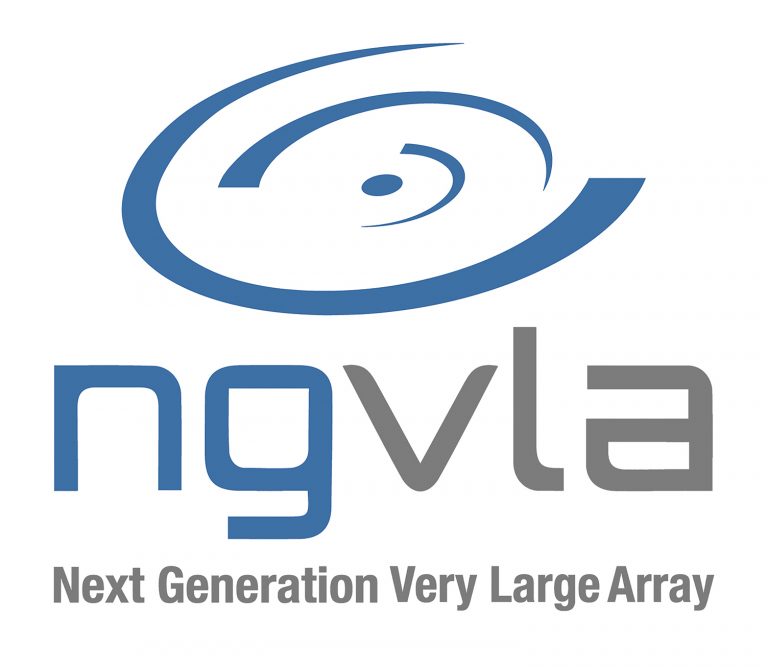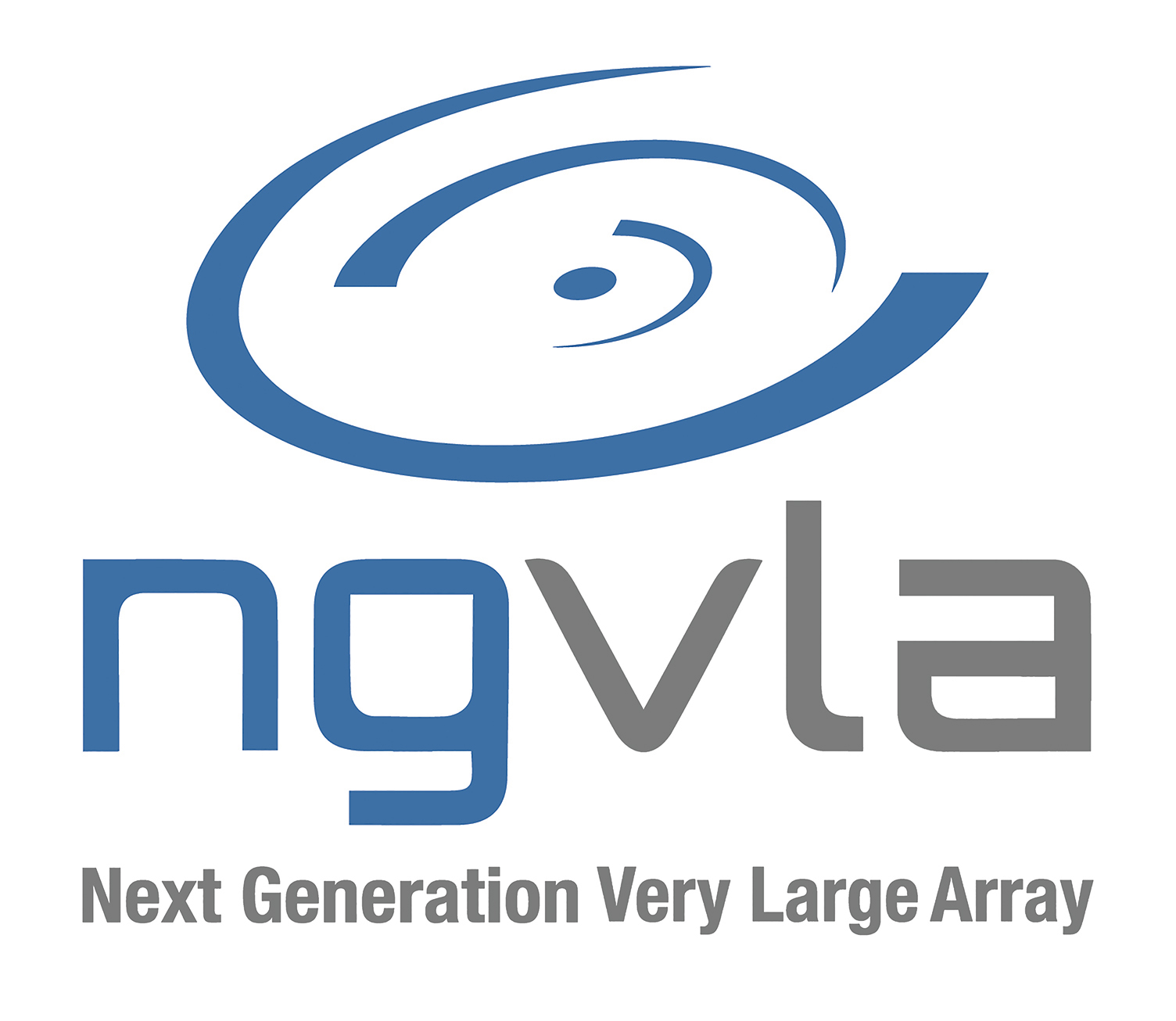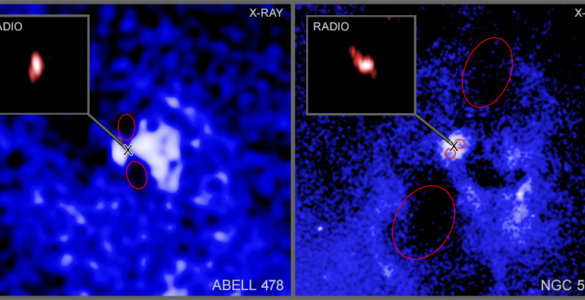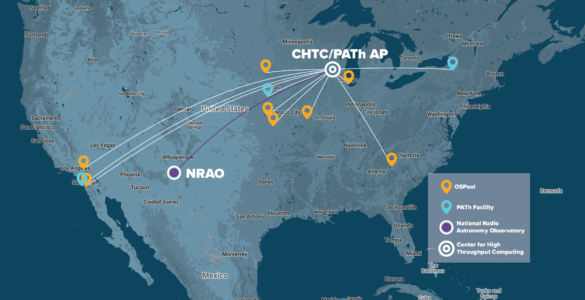Using new funding from the National Science Foundation (NSF) for exploring the design of a next-generation radio telescope, the National Radio Astronomy Observatory (NRAO) has contracted with an integrated-circuit design firm to design and produce a specialized integrated circuit that can greatly improve the efficiency of data transmission from real-world sensors to the computers that process the data. While the development supports NRAO’s next-generation radio telescope initiative, it also has potential applications in a number of scientific, commercial, medical, aerospace, industrial, and military fields.
NRAO hired City Semiconductor, a San Francisco-based integrated circuit design house specializing in ultra high-speed analog design, to implement a serial analog-to-digital converter developed at NRAO’s Central Development Laboratory in Charlottesville, Virginia, a facility funded by the NSF, and patented by the observatory. The technique converts incoming analog data to digital form for transmission over fiber-optic links.
“This system eliminates the need for digital processing at the sensor, and thus reduces the size, power requirements, and radio-interference potential at the sensor,” said Matthew Morgan, an NRAO engineer. “To gain the full advantages of this technique, it needs to be built into an integrated circuit to further reduce the weight and power consumption,” he added.
The technique, applicable to data coming from naturally-occuring sources, has been prototyped and tested at NRAO’s Central Development Laboratory, and the integrated circuit will become an important part of the design for the next generation Very Large Array (ngVLA), a planned NSF radio telescope with scientific capabilities far beyond those provided by any existing or currently proposed observatory. This proposed array, consisting of 214 antennas, would extend across the desert southwest of the United States and into northern Mexico and West Texas. It would build on the success of the Karl G. Jansky Very Large Array, dedicated in 1980.
Operating at frequencies from 1.2 to 116 GHz, the ngVLA will utilize the excellent observing conditions and the existing infrastructure at the VLA site to provide 10 times the sensitivity and resolution (ability to see detail) of the current VLA. It will greatly complement the capabilities of the Atacama Large Millimeter/submillimeter Array (ALMA) and the planned Square Kilometer Array (Phase 1) with greatly enhanced performance at wavelengths between those covered by those two facilities.
The ngVLA will be able to simultaneously provide capability to address challenging scientific priorities across a wide range of astronomical fields. These include unveiling the formation of planetary systems like our own Solar System; studying the precursors of life with astrochemistry; determining how galaxies have been assembled and evolved from the first billion years of the Universe’s history to the present; and studying pulsars near the Milky Way’s center to determine the detailed characteristics of gravity. In addition, the ngVLA will be able to advance our understanding of how black holes form and evolve, in conjunction with advanced facilities that detect gravitational waves.
“The capabilities of the ngVLA are the only means of answering a broad range of critical scientific questions in modern astronomy,” said NRAO Director Tony Beasley. “The ngVLA will open a new window on the Universe, and its scientific and technological innovations promise great contributions to society across many dimensions,” he added.
“We are excited to work with NRAO on the ngVLA project,” said City Semiconductor President Chris Menkus. “We believe that NRAO is leading the industry with this design, and the resulting chip could find uses far beyond radio astronomy,” he added.
Funding for the new initiative was provided by the National Science Foundation’s Division of Astronomical Sciences, allowing NRAO to re-profile $11M in funding planned for instrument development over a longer time period into a focused two-year effort. This large telescope initiative was included in AUI’s successful proposal to the NSF to manage NRAO over the decade just starting, and NSF’s decision allows NRAO to accelerate the early design studies. This will enable the ngVLA concept to be more fully developed for the next U.S. astronomy Decadal Survey, commencing in 2019-2020, where all major new instruments and capabilities are considered by the research community.
More information on ngVLA can be found here and here.
The National Radio Astronomy Observatory is a facility of the National Science Foundation, operated under cooperative agreement by Associated Universities, Inc.
###
Media Contact:
Dave Finley, Public Information Officer
(575) 835-7302
dfinley@nrao.edu











